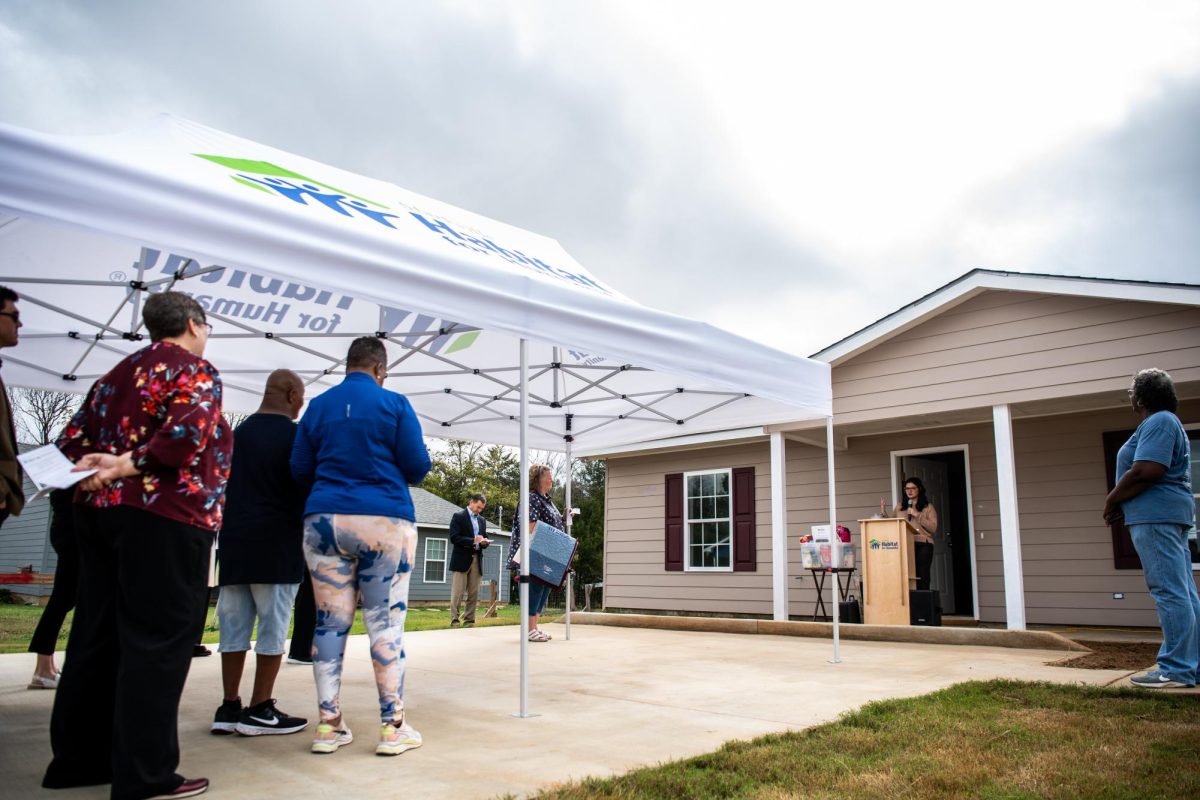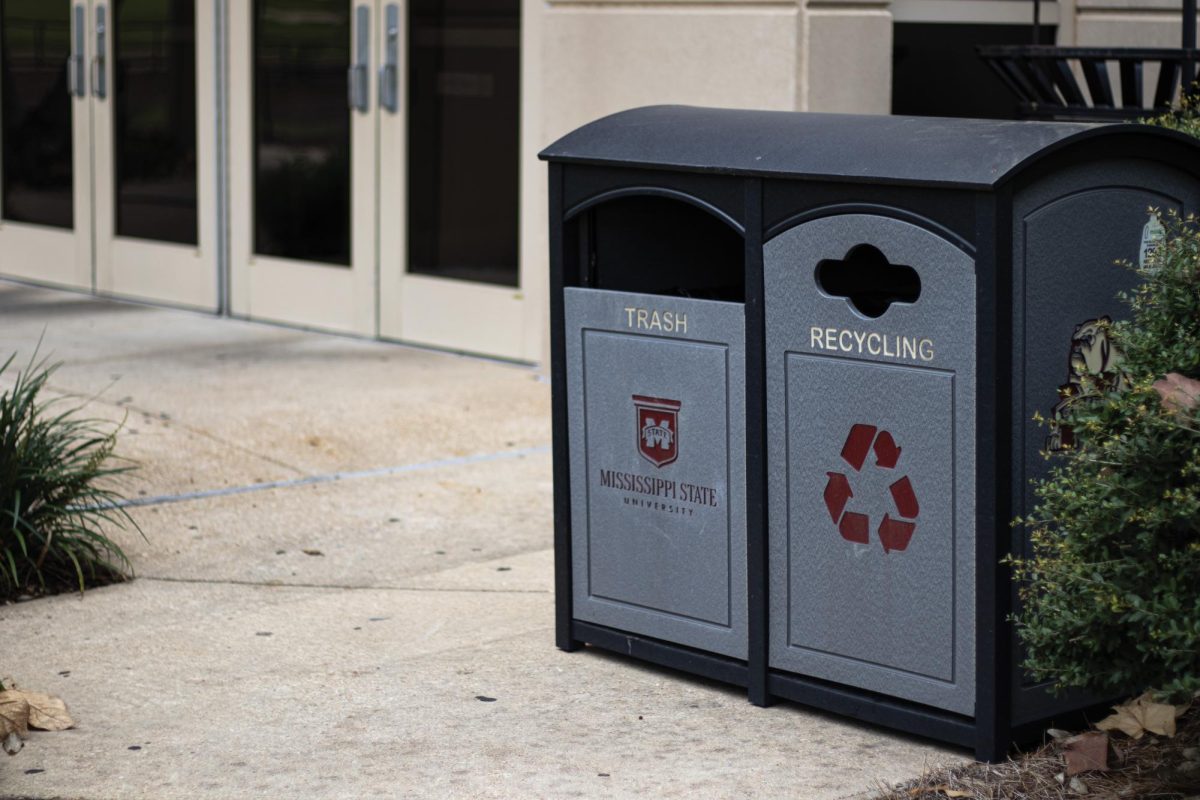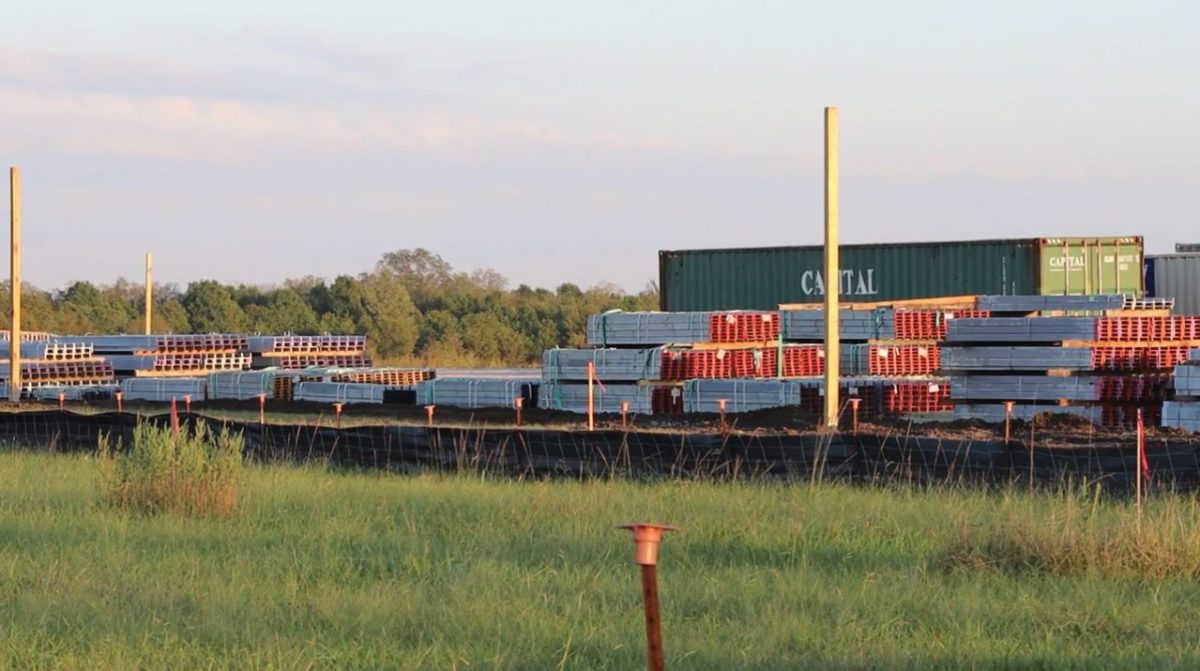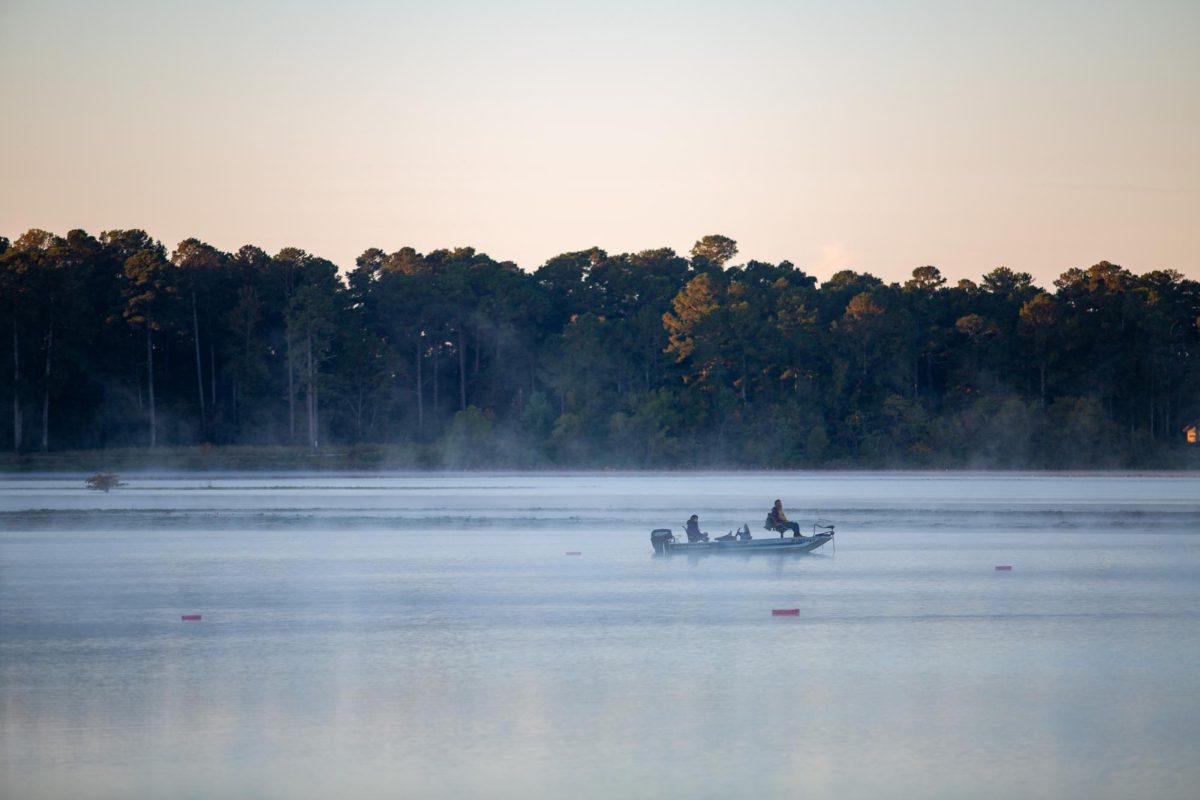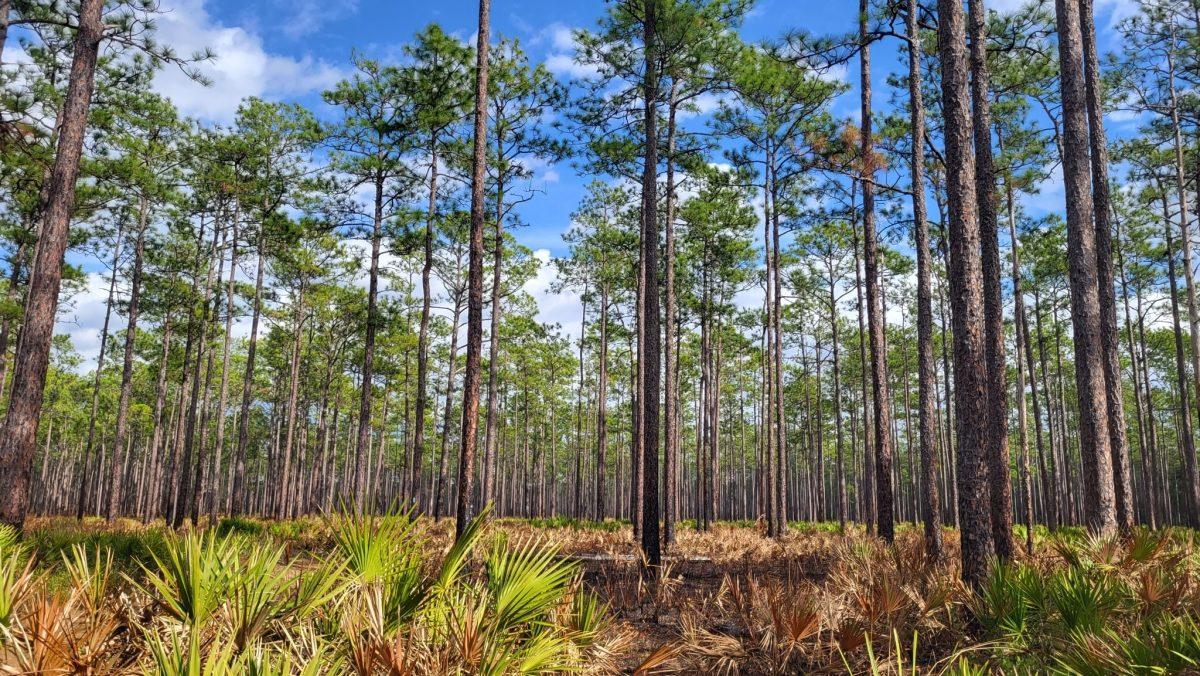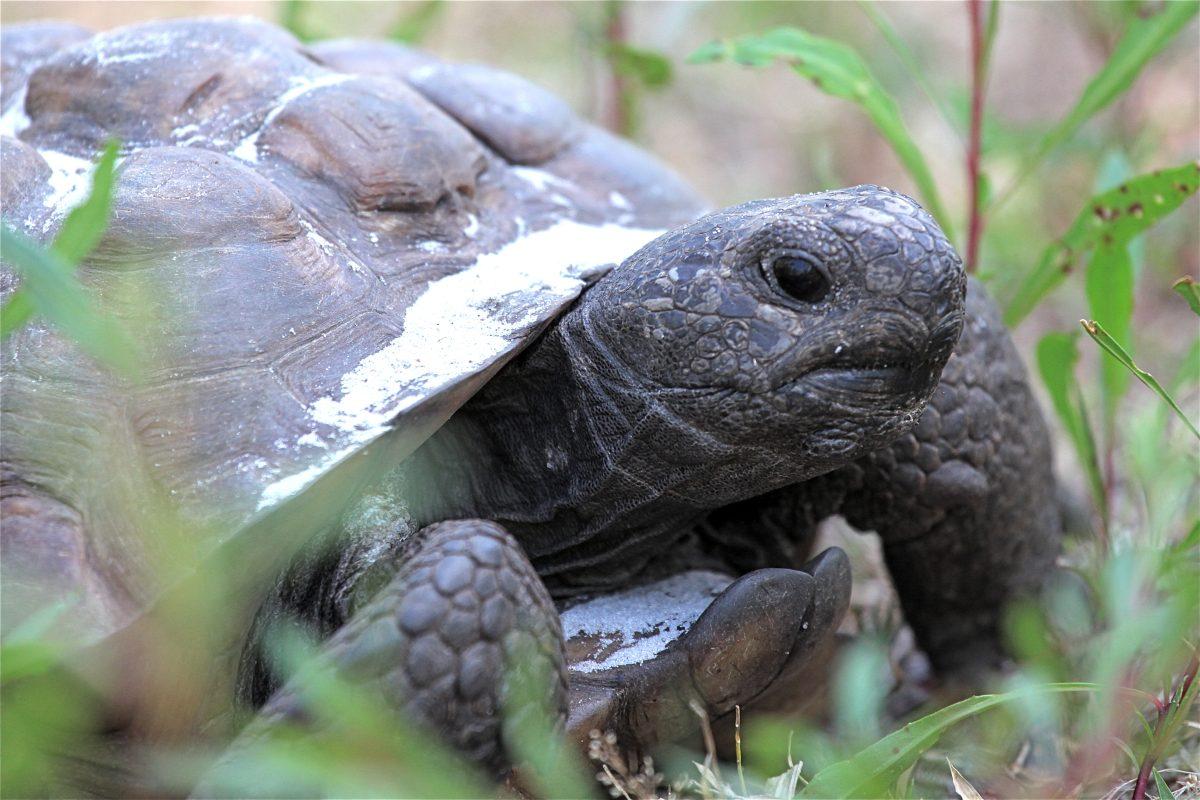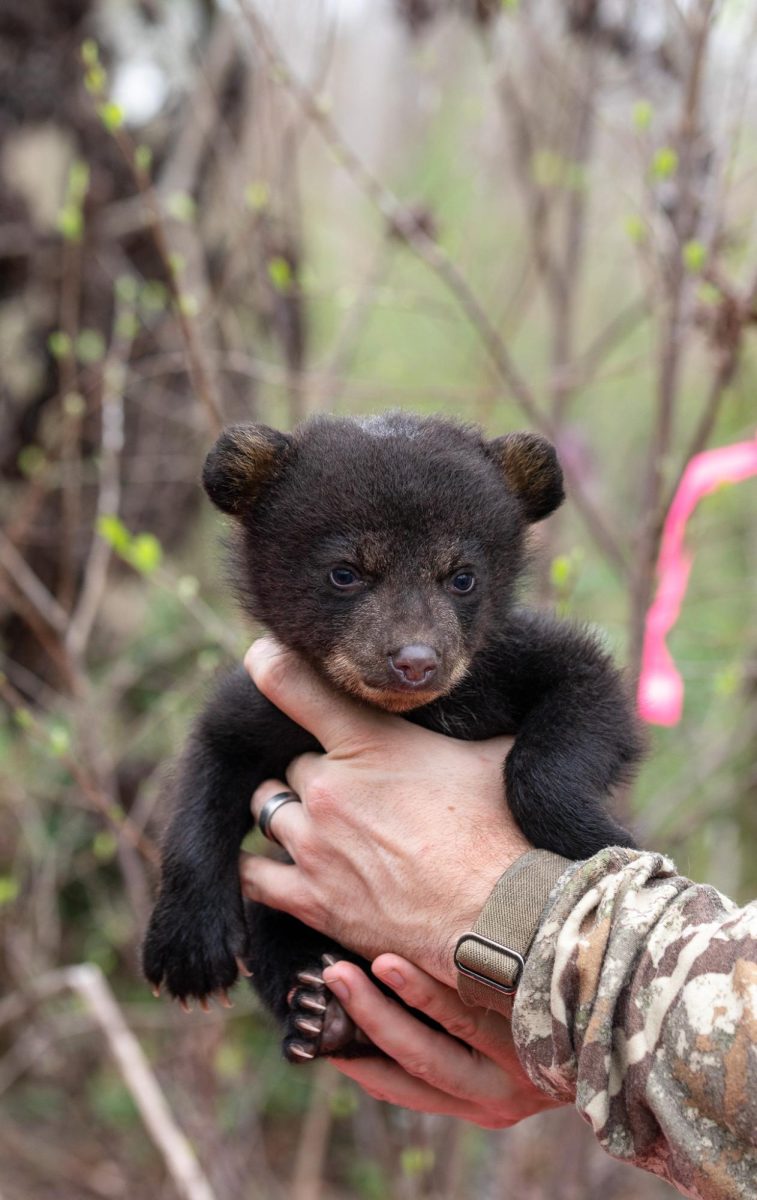Pale smoke rises above a tall canopy of needles. A blaze crawls underneath, eating away at the yellowed savannah of wire grass. Crackling flames lick at the towering pines, their flaky bark stretching skyward for more than 80 feet.
On the soil made blackened and bare by the burn, life thrives. Birds twitter overhead, searching the ground for an exposed meal. Tortoises, frogs and snakes rise from their cool burrows. Pine saplings ready themselves for explosive growth.
The longleaf pine forest once dominated the landscape of the coastal southeast – over 90 million acres spread from southeastern Virginia through Mississippi to eastern Texas and south through the northern two-thirds of Florida. Early settlers would travel through this forested savannah for days on end, past trunks they could not wrap their arms around. It was a seemingly limitless supply of high-quality lumber.
According to the America’s Longleaf Restoration Initiative (ALRI), the forest has lost more than 97% of its historic extent. 3.4 million acres of fragmented forest remain, much of which is under private ownership. Fire, something essential to the health of the longleaf pine, is often suppressed.
Despite this, recent conservation efforts have improved the outlook of the longleaf pine forest in Mississippi.
The Mississippi Department of Wildlife, Fisheries and Parks has begun work on a new 2025-2035 State Wildlife Action Plan (SWAP), a guide to the long-term conservation of Mississippi’s ecology.
Elizabeth Rooks-Barber, a wildlife biologist and the plan’s coordinator, said that the plan will likely bring more attention to the conservation needs of the longleaf pine ecosystem. So far, the list of species of conservation concern has tripled in size since the 2015-2025 plan and now includes plants, insects and marine life.
“We have to list the abundance and distribution of species that are in low and declining populations, and then we describe their locations and condition of their habitat. We go through and address the description of priority research needs and survey needs,” Rooks-Barber said. “We talk about the threats and potential conservation actions for species of concern and their habitat.”
Dr. Kristine Evans, a professor of conservation biology at Mississippi State University, said that longleaf pine forests are biodiversity hotspots.
According to Evans, experts estimate there are as many as 140 species of flora and fauna in a quarter of an acre and about 900 plant species endemic to this system, making it one of the most diverse ecosystems in temperate North America.
“But the uniqueness and the rarity of some of these species makes it a really, really important system,” Evans said.
A System of Specialists
29 federally threatened or endangered species are associated with the longleaf pine forest. One unique species is the gopher tortoise, the only North American tortoise found east of the Mississippi River.
Only about nine inches long, its dull-brown carapace creeps steadily across the open forest floor. The tortoise digs its long claws into the sandy soil, burrowing a home up to 40 feet long and 10 feet wide. When a fire approaches, the gopher tortoise escapes to its cool and humid burrow, where its eggs remain safe.
According to the Nature Conservancy, the gopher tortoise is a keystone species. At least 300 other species use their burrows to escape predators and the regular fires that pass through the longleaf pine forest. Unfortunately, the gopher tortoise is federally threatened.
Without fire to burn away forest undergrowth, the tortoise cannot burrow. In addition, human interaction often destroys their burrows.
The Nature Conservancy in Mississippi is leading a program at the Camp Shelby Joint Forces Training Center where they incubate, raise and release hundreds of gopher tortoises each year. Hatchlings are released at a considerable size and sexual maturity, giving them the best chance at increasing the wild population.
About 170 of the Southeast’s 290 reptiles and amphibians are found in the longleaf pine forest; 30 of those reptile and amphibian species are only found within the forest. Steve Reichling, director of conservation and research at the Memphis Zoo, works closely with one such amphibian, the dusky gopher frog.
“I call it the most critically endangered frog in the US,” Reichling said.
After heavy rain, temporary ponds form in a forest floor swept open by fire. Dusky gopher frogs, black, brown or gray and covered in dark ridges and warts, congregate to reproduce. After the mating season, they move to the forest’s uplands where they depend on the gopher tortoise’s humid burrows to survive.
According to Reichling, habitat loss has heavily impacted the dusky gopher frog. In 2003, only one population of about 100 frogs remained. Since then, the U.S. Fish and Wildlife Service, the Nature Conservancy and other organizations have worked to save the frog from extinction.
For the past 20 years, the Memphis Zoo has worked in collaboration with the zoos of Omaha, Detroit and Dallas to breed dusky gopher frogs and establish new metapopulations – separate populations that can reproduce with one another.
After decades of work, the project has shown evidence of new populations reproducing in Southern Mississippi. Reichling estimates that a couple of thousand wild frogs currently exist in the wild.
“It’ll be a number more years, but we’re on the right path to create these metapopulations,” Reichling said.
Mississippi State’s Dr. Evans said healthy longleaf pine forests can contain up to 100 bird species. Some nest in the pines themselves, while others nest on the grassy forest floor. Many of these species struggle to adapt to pine forests without fire. One is the red-cockaded woodpecker, one of the original species listed in the Endangered Species Act of 1973.
The red-cockaded woodpecker has a 15-inch wingspan barred with black and white horizontal stripes and is the only woodpecker to make its nest cavity exclusively in trees that are living. It prefers pines of at least 60 years of age, and populations that have declined with the disappearance of mature longleaf pine forests. In forests without fire, hardwood trees grow to crowd the forest canopy and provide predators with easier access to their nests.
“These little suckers, they really like these very narrow ranges of tolerable habitat, and that’s why they’re declining. As humans, we have not produced what they need,” Evans said. “If tomorrow, it was economically viable for everybody to open up their pine stands and burn all the time, we’d have red-cockaded woodpeckers all over the place.”
Since the 1990s, the U.S. Fish and Wildlife Service has collaborated with local organizations to produce artificial habitats for the red-cockaded woodpecker. At Mississippi’s Sam D. Hamilton Noxubee National Wildlife Refuge, conservationists climbed 70-foot ladders and sawed artificial cavities in trees. According to Evans, red-cockaded woodpecker populations are increasing.
Partners in Conservation
Collaboration between federal, state and non-governmental organizations has been instrumental in conserving and restoring the longleaf pine forest. The Longleaf Alliance is a nonprofit organization that focuses on guiding the restoration, stewardship and conservation of the longleaf pine forest. The alliance is one of many organizations working toward America’s Longleaf Restoration Initiative.
Cody Pope, western technical assistance and training specialist for the Longleaf Alliance, said since 2010, 1.6 million acres of longleaf have been planted and over 300,000 acres of longleaf pine woodlands have been put into protection under the ALRI as of 2021. Additionally, over 15 million acres have been burned to improve the health of longleaf pine forests as of 2021.
“The local implementation teams that have been put together throughout the range have been instrumental in completing the on-the-ground work necessary to restore and conserve these ecosystems as well as educating the public about their significance,” Pope said.
Tamara Campbell is a wildlife biologist for the U.S. Fish and Wildlife Service and guides Mississippi’s implementation team, which works to achieve the ALRI’s goal to increase the longleaf pine forest to 8 million acres by 2025. Campbell said the conservation of the longleaf pine forest is a complex task.
“Monitoring and evaluation of longleaf conservation can be difficult, particularly considering the temporal response of species and the dynamics of environmental factors,” Campbell said.
Private landowners, governmental organizations and non-profits all refer to the State Wildlife Action Plan when planning their conservation efforts. Rooks-Barber, the plan’s coordinator, said the SWAP is an important reference document for any party concerned with conservation.
“It’s a really important document for a lot of different conservation and restoration efforts. It’s important that we do well and that we describe everything based on the best science,” Rooks-Barber said. “Granted, we don’t we don’t know everything about a lot of these things, and we’ll never know that.”
The MDWFP is still reviewing species of conservation concern. In June, the plan will open for public review. Those interested in receiving updates on the plan can email [email protected] with a name, email and phone number.
Gopher tortoises can take more than 16 years to mature and reproduce, making them especially vulnerable to habitat destruction.

